The National Maritime Museum Cornwall Launch a Recreation of a Bronze Age Boat
Advertisements:
Crew in Britain's first ever full-size reconstructed sea-going Bronze Age boat, bail out water as they prepare to paddle out to sea near to the National Maritime Museum as it makes its maiden voyage on March 6, 2013 in Falmouth, England. With a crew of of 18, equipped with Bronze-Age-style wooden paddles, the 15 metre long experimental vessel – a replica of the sort of craft used for long-distance trade between Britain and the continent 4000 years ago – will be used to test prehistoric seafaring methods in a project in collaboration with the University of Exeter and the Falmouth-based National Maritime Museum Cornwall. (Photos by Matt Cardy)
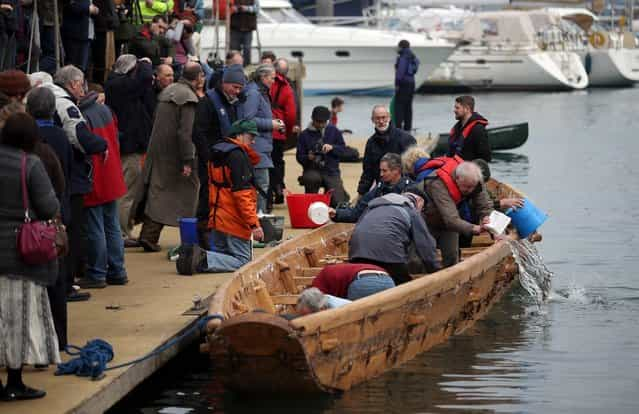
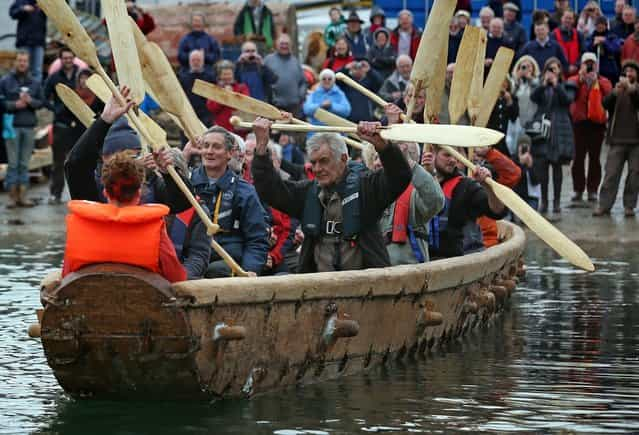
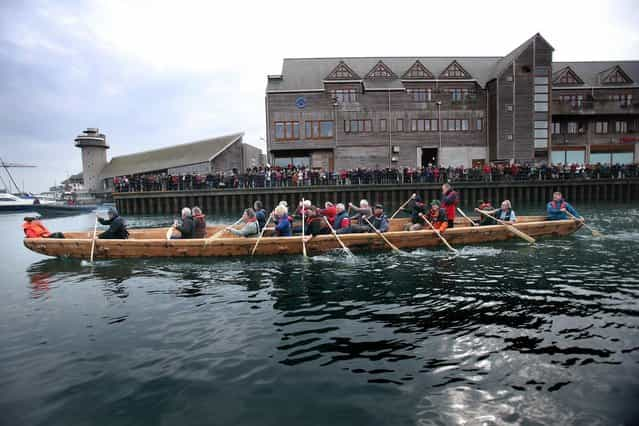
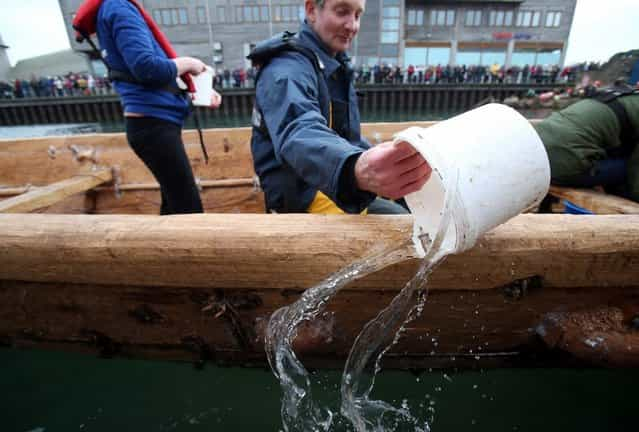
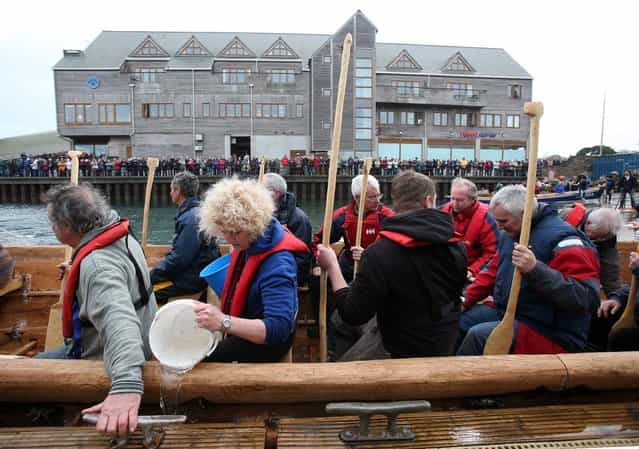
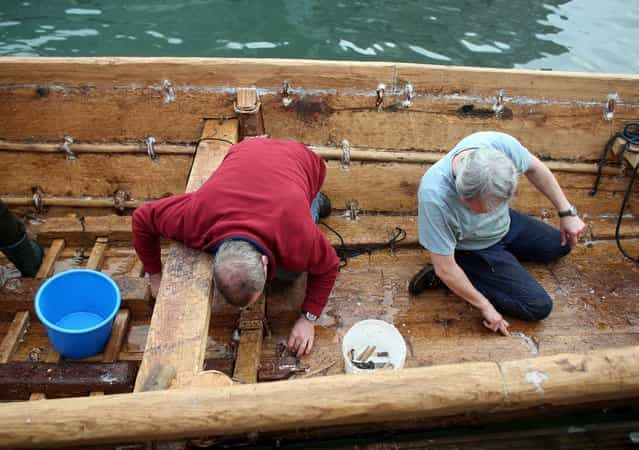
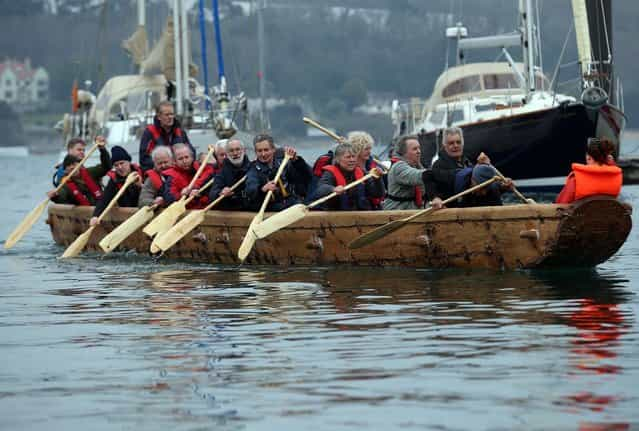
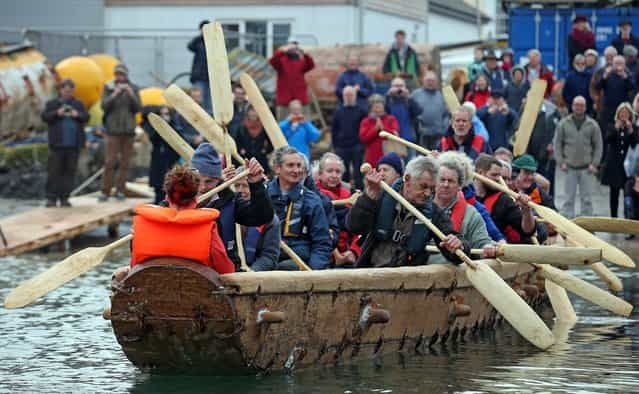
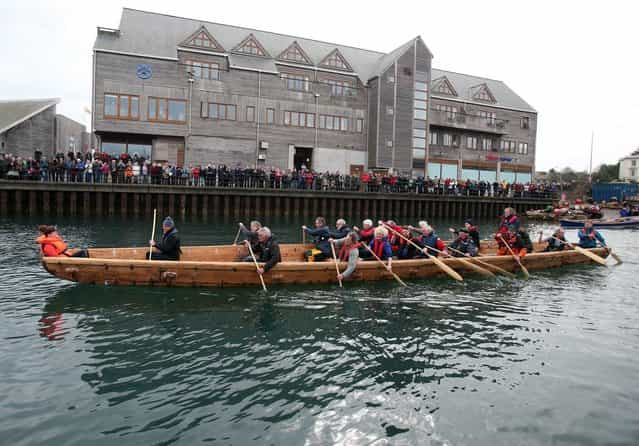
![Damien Hirst's Giant Bronze Sculpture Of A Pregnant Woman [Verity] Is Erected In Ilfracombe Damien Hirst's Giant Bronze Sculpture Of A Pregnant Woman [Verity] Is Erected In Ilfracombe](http://img.gagdaily.com/uploads/posts/fact/2013/short/00009df3_medium.jpg)


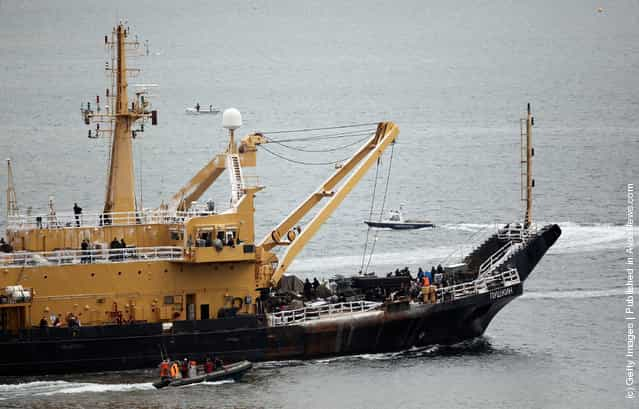





![Rare [Hybrid] Total Solar Eclipse Rare [Hybrid] Total Solar Eclipse](http://img.gagdaily.com/uploads/posts/fact/2013/short/00010c55_medium.jpg)






